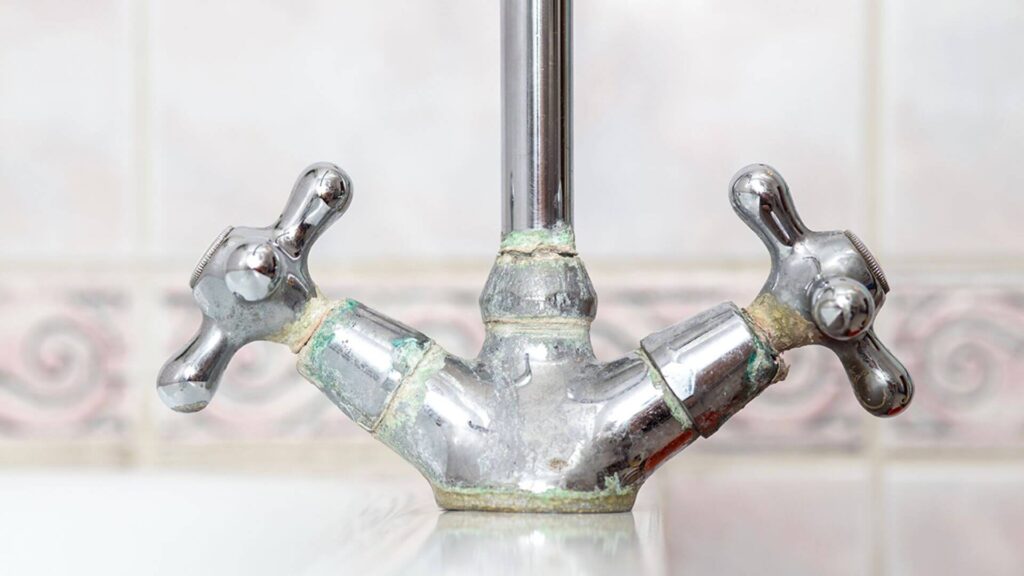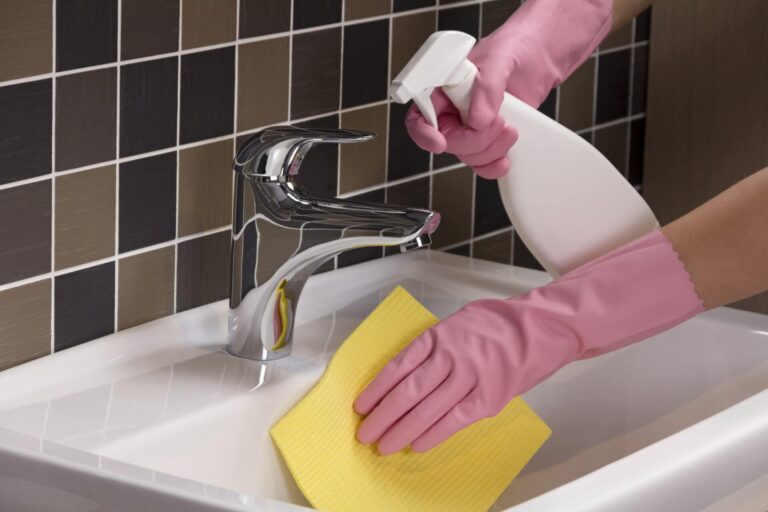
Limescale and soap scum build-up can make any home look unclean and dated. Not only are these mineral deposits unsightly, but they can also damage surfaces, breed bacteria, and clog plumbing. Luckily, with the right techniques and cleaning solutions, you can banish limescale and soap scum for good.
In this comprehensive guide, we will cover everything you need to know to effectively remove limescale and soap scum throughout your home.
What Causes Limescale and Soap Scum?
Before we dive into removal methods, it’s important to understand what causes these pesky mineral deposits in the first place.
Limescale comes from hard water, which contains a high concentration of minerals like calcium and magnesium. As hard water evaporates, it leaves behind a chalky white or yellow residue on surfaces. This builds up over time into a thick, crusty deposit known as limescale.
Soap scum forms when soap combines with the minerals in hard water. Unlike powdery limescale, soap scum has a smooth, filmy texture that sticks to tiles, glass, chrome and other surfaces.
Both limescale and soap scum thrive in warm, damp environments like bathrooms and kitchens. Without regular cleaning, they accumulate quickly and become tougher to remove.
Why Remove Limescale and Soap Scum?
Letting limescale and soap scum build up comes with several downsides:
- Creates an unhygienic environment prone to mold and bacteria
- Clogs plumbing fixtures and appliances leading to breakdowns
- Leaches minerals that corrode sinks, faucets and other surfaces
- Ruins the aesthetic look of tiles, glass and chrome
- Makes cleaning more tedious and time-consuming
Catching build-up early and removing it quickly makes cleaning easier and prevents lasting damage.
6 Fast and Effective Removal Techniques
When mineral deposits are light, you can likely scrub them away with regular household cleaners. But once they accumulate and harden, it takes a little extra elbow grease and specialty products to bust through them.
Here are 6 super-effective methods for obliterating thick limescale and soap scum:
1. Vinegar
As a mild acid, vinegar dissolves soap scum and limescale on contact. For best results:
- Use undiluted white distilled vinegar
- Let it soak for at least an hour before scrubbing
- Repeat applications for thicker build-up
Avoid vinegar with colored surfaces as it can stain grout.
2. Baking Soda and Vinegar

For even tougher mineral deposits, use baking soda and vinegar together. Baking soda is a gentle abrasive and also reacts with vinegar to create a fizzing paste that breaks down residues.
Make a paste by sprinkling baking soda directly onto build-up. Then spray or wipe vinegar over the area. Let sit for 5-10 minutes before scrubbing and rinsing.
3. Lemon Juice
Like vinegar, lemon juice contains citric acid that dissolves mineral deposits and soap scum. Cut a fresh lemon in half and rub it directly onto affected areas. Let it soak in for a few minutes before scrubbing.
4. Cream of Tartar
The abrasive nature of cream of tartar makes it ideal for scrubbing away all sorts of gunk. When combined with lemon, it creates a gritty paste that cuts through soap scum.
Mix equal parts cream of tartar and lemon juice. Apply to build-up and let sit before scrubbing.
5. Commercial Limescale Removers
When dealing with heavy limescale, specialized cleaning solutions often work better than homemade options. Look for descaling products that contain acids like sulfamic or hydrochloric acid.
Be sure to carefully follow manufacturer’s instructions, especially when wearing gloves and diluting products. Harsh acids can damage skin and surfaces.
6. Professional Deep Cleaning
For extremely stubborn deposits or build-up in tricky areas, calling a professional cleaning company may save time and frustration. Tile and grout cleaning services use high-powered tools like steamers and rotary scrubbers to safely dissolve thick limescale and soap scum throughout bathrooms and kitchens.
Many also apply protective sealants during service to repel future gunk.
Targeted Cleaning Solutions by Surface & Room
Cleaning methods also vary depending on the room and types of surfaces involved. Here are some targeted tricks for keeping specific areas sparkling:
Bathroom
- Tiles: Spray tiles and grout with undiluted white vinegar. Let soak 5-10 minutes before scrubbing with a stiff brush. Rinse thoroughly.
- Toilets: Remove tank and bowl water. Sprinkle toilet bowls with borax or baking soda. Spray bowls thoroughly with vinegar and let bubble for 5 minutes. Scrub well and flush to rinse.
- Faucets: Stuff vinegar-soaked paper towels or rag around and inside faucets. Secure with a plastic bag and let sit overnight before rinsing. Use an old toothbrush to scrub crevices.
Kitchen
- Sinks: Sprinkle sink surface with baking soda. Spray with vinegar and let bubble for 2-3 minutes. Scrub residue away with a sponge, then rinse.
- Appliances: Consult your owner’s manual for proper exterior cleaning methods for appliances. Avoid using acidic cleaners and abrasives.
- Faucets: Dip half a lemon into borax and rub it all over faucets. Let it soak in 10 minutes before scrubbing and rinsing.
Shower & Tub
- Glass Doors: Spray down doors with undiluted vinegar. Let soak 5 minutes. Use a razor blade to gently pry off chunks. Remove remaining scum by scrubbing with baking soda paste.
- Tiles & Surrounds: Apply thick baking soda paste onto walls with a damp sponge. Mist vinegar over paste and let bubble and fizz for 2-3 minutes before scrubbing.
- Tubs & Showers: Mix 1 cup baking soda with just enough hydrogen peroxide to form a spreadable paste. Apply paste thoroughly to all surfaces. Wait at least an hour before rinsing.
Prevention Is Key
While important, removal is just half the battle. Preventing future build-up is critical for reducing cleaning time and effort.
Here are 5 tips to slow mineral deposit formation:
- Install water softening systems to reduce mineral content
- Always wipe down and dry shower doors and tile after use
- Open bathroom windows or run fans during and after showering
- Use gentle, natural soap instead of heavy-duty cleansers
- Develop a weekly cleaning routine focused on problem areas
With some elbow grease and the right cleaning solutions, you can keep limescale and soap scum from taking over your surfaces. Stay vigilant by attacking build-up early and often and incorporating preventive measures.


